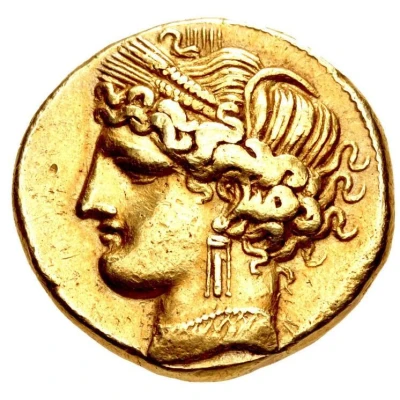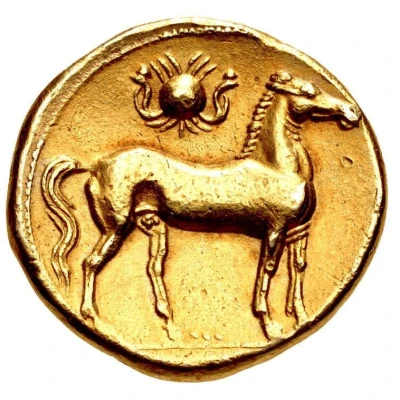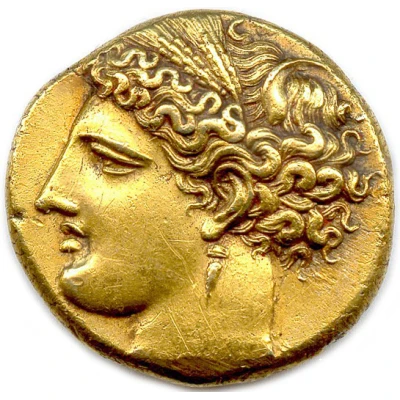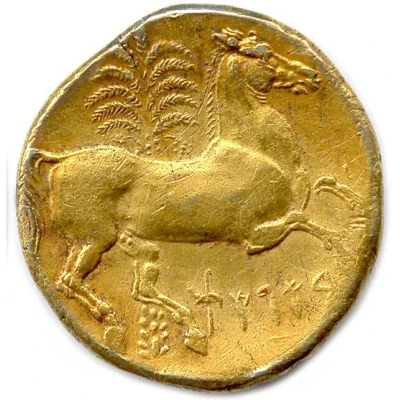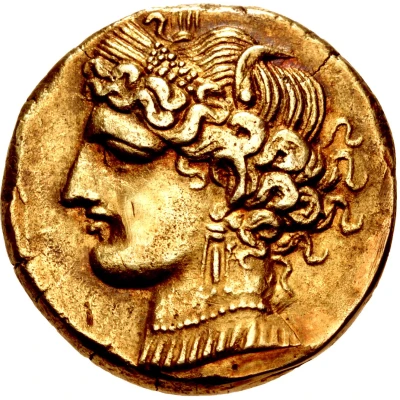
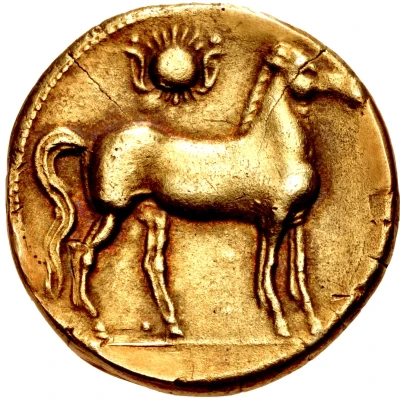

© Classical Numismatic Group, Inc.
Trihemistater 264 BC - 241 BC
| Electrum (34-36% gold) | 10.67 g | 22 mm |
| Issuer | Carthage (Zeugitana) |
|---|---|
| Type | Standard circulation coin |
| Years | 264 BC - 241 BC |
| Value | Gold Trihemistater (18) |
| Currency | Shekel |
| Composition | Electrum (34-36% gold) |
| Weight | 10.67 g |
| Diameter | 22 mm |
| Shape | Round (irregular) |
| Technique | Hammered |
| Demonetized | Yes |
| Updated | 2024-10-09 |
| Numista | N#192683 |
|---|---|
| Rarity index | 100% |
Reverse
Horse standing right, head left; ouraios above; pellet behind foot of leading hind leg.
Comment
Reduced standard.
CNP 41i; Bement 600.
Interesting fact
The Trihemistater coin was used as a form of currency in the ancient city of Carthage, which was located in present-day Tunisia. The coin's name, "Trihemistater," means "three- sixths of a stater," which refers to its value relative to the stater, a unit of weight and currency used in ancient Greece and the Mediterranean region. The Trihemistater coin was made of electrum, a naturally occurring alloy of gold and silver, and weighed around 10.67 grams. Despite its relatively small size, the Trihemistater coin played an important role in the economy of Carthage and was widely used for trade and commerce.
